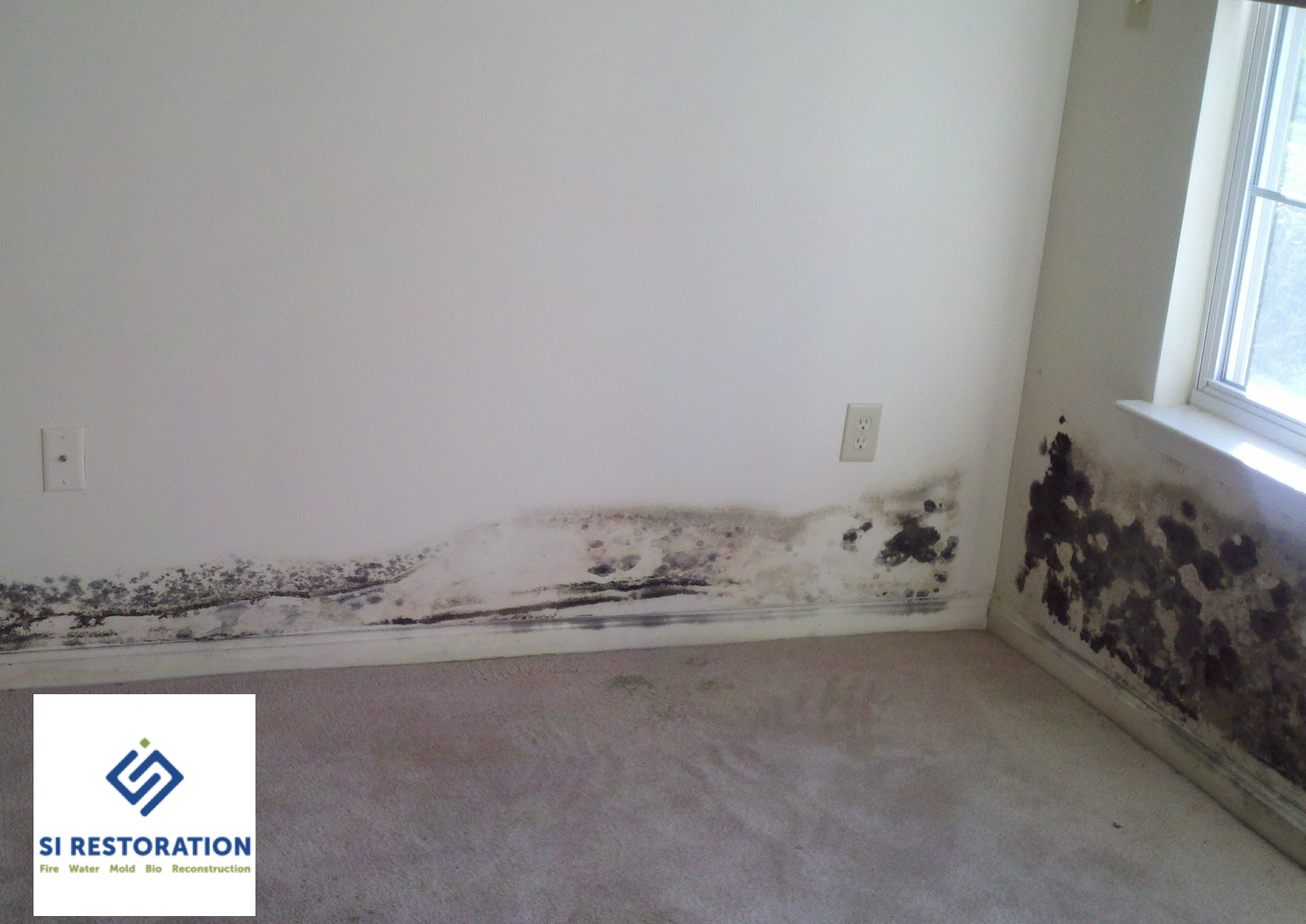Mold Removal Steps (Explained Below):
- Step 1: Identify the Mold
- Step 2: Protect Your Self
- Step 3: Apply the Cleaning Solution
- Step 4: Cleanup
- Step 5: Keep an Eye Out for Remaining Mold
Black Mold Definition (and Description):
A black or green substance that is usually slimy in texture, is what is most commonly referred to as "toxic mold". Black mold is scientifically referred to as Strachybotrys atra or Strachybotrys chartarum, an asexually reproducing fungus that usually colonizes on materials rich in cellulose. Porous organic compounds like wood, paper, and fabric are all prone to black mold infestation. Black mold contains over 50 unique species and is widespread in distribution and can usually be found in areas of the home prone to moisture.

Mold Removal Process (Including Black Mold) Explained:
- Step 1 - Identify the Mold: Porous organic compounds like wood, paper, and fabric are all prone to black mold infestation. This particular genus of mold contains over 50 unique species and is widespread in distribution. It is a black or green substance that is usually slimy in texture that can usually be found in areas of the home prone to moisture.
- Step 2 - Protect Your Self: Before attempting to clean up the mold, put on protective clothing and make sure you are taking the proper safety precautions. You don't necessarily need a hazmat suit for a small infestation but you should still be armed with protective gear to minimize exposure. Use an air mask or respirator that can adequately block mold spores from entering your lungs. Wear rubber gloves and safety goggles as well to ensure the spores do not come in contact with skin and sensitive body orifices (i.e. eyes, mouth, nose, etc.). In order to protect yourself from possible allergic reactions, it is recommended you wear clothing that protects as much skin as possible, and if you are extremely sensitive to mold exposure, to avoid the task all together and request the help of someone else.
- Step 3 - Apply the Cleaning Solution: For minor mold infestations, ordinary household cleaning products such as household bleach, can be used. You can apply your chosen cleaning solution with a spray bottle, lightly damp rag, low-abrasive scrub brush, or sponge. Generously apply the solution to the affected area. Let the solution sit for a few minutes prior to scrubbing. Once it has sat undisturbed for a few minutes, scrub the area in a circular motion.
- Step 4 - Cleanup: After removing the mold, remove excess substance with a disposable towel. Dispose of or disinfect anything that came in contact with the mold. Let the area dry. If you live in an area with higher humidity, utilize a dehumidifier.
- Step 5 - Keep an Eye Out for Remaining Mold: Make sure mold isn't growing again in the next few days to weeks. If mold does reappear it may mean that your bathroom does not have enough air circulation, which can be resolved by opening a window or running a fan or dehumidifier, if possible. If not possible, it is necessary to clean more frequently to prevent mold growth.
It is important to make sure the black mold problem is resolved as soon as possible to prevent the infestation from escalating. Follow steps 1 through 5 to make sure your minor mold problem is properly treated.
How do I know if I can fix the mold problem myself or if I need to hire a professional?
Small mold situations can be removed without professional assistance as long as the mold spores are not disturbed and distributed throughout the home. It is recommended you have a professional mold test conducted by a qualified industrial hygienist if you suspect there may be a larger mold issue, such as mold that isn't visible. This test will be able to identify the affected areas as well as the level of toxicity of the mold. More toxic mold situations need to be handled by a mold remediation company that can provide certified professional mold removal service such as SI Restoration, in order to ensure the mold problem is completely removed in a safe and effective manner.
Call Us at 443-530-8657 or use our Contact Us form for More Information!